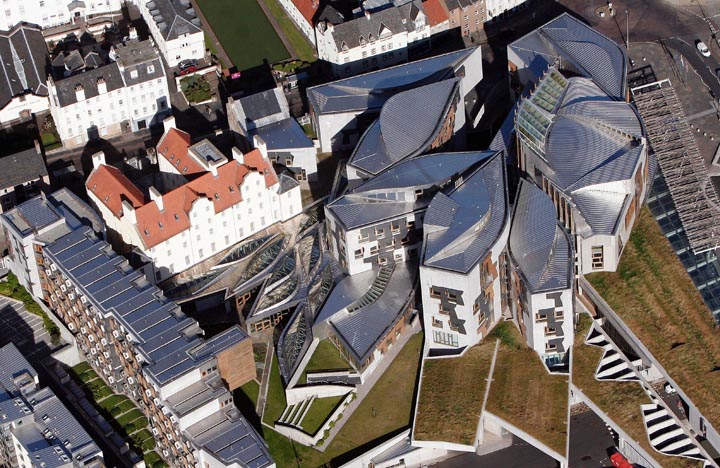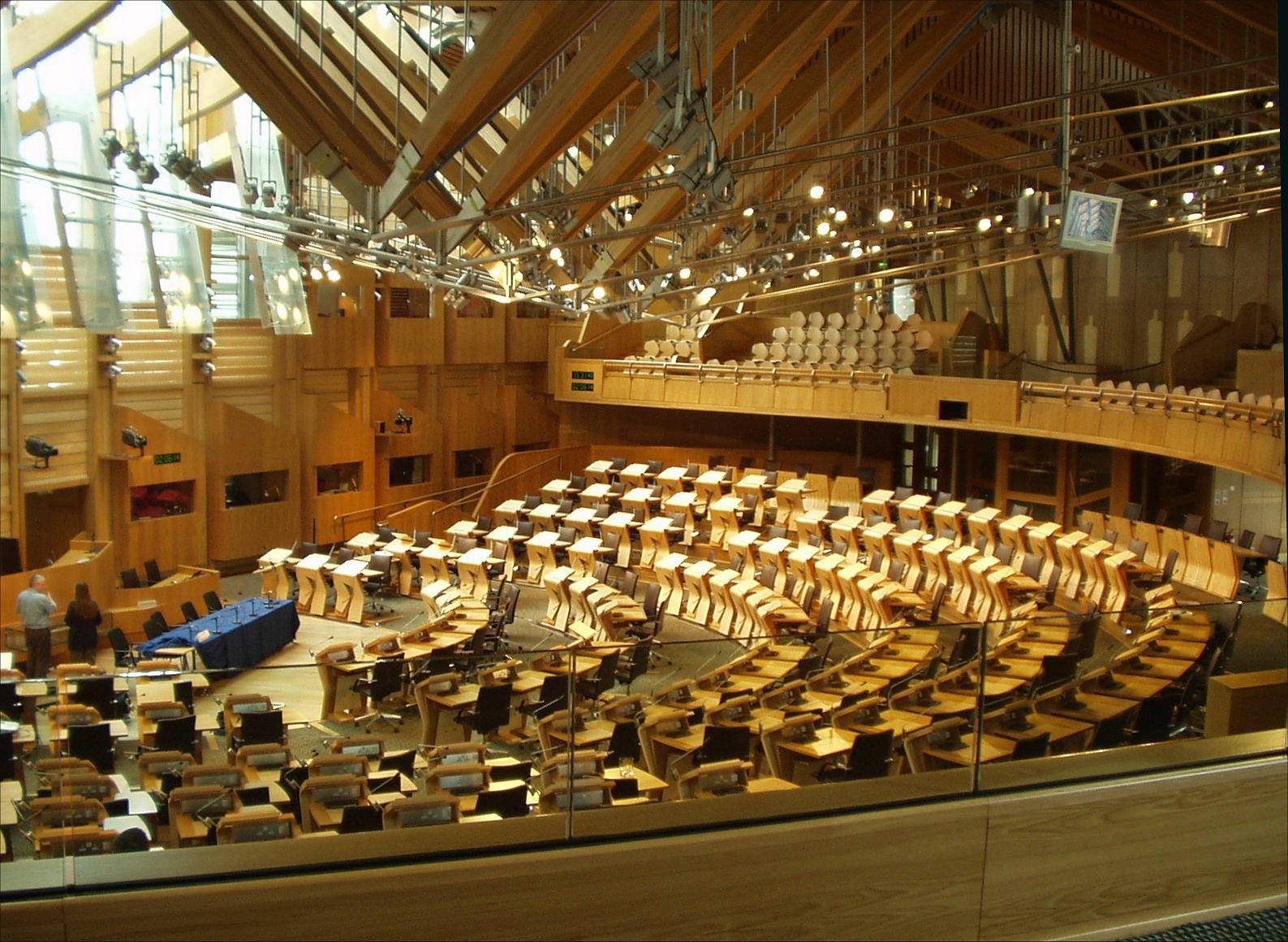Scottish Parliament Building
See the rest of the Unusual building of the week series here.
Scotland’s Parliament Building is located at the foot of Edinburgh’s Royal Mile, opposite Holyrood Palace and overlooked by Salisbury Crags and Arthur’s Seat. It was designed by the Spanish architect Enric Miralles, who died shortly before its completion in 2004, having been under construction since 1999. Miralles had drawn inspiration from the surrounding landscape, saying that he wanted a building that appeared to be ‘growing out of the ground’.
Rather than being a single building, the Parliament is a campus of several, each reflecting different architectural styles, with a total floor area of 31,000 sq. m. The roof of the buildings is distinctive, reminiscent of upturned boats on the seashore.
They are constructed from a mixture of steel, oak and granite. A great deal of landscape also forms part of the architecture, with 60% of the urban site being covered in vegetation.
The Debating Chamber is a modernist space finished in oak, sycamore and glass, with a complex roof structure made from tensile steel wires and steel-reinforced oak beams.
From the outset of the project, the building proved controversial, with many detractors from politics, media and the public. It was delivered 3 years late and had an estimated final cost of £414 m, drastically higher than the initial estimates of £10-40m. The high profile Fraser Inquiry into the construction criticised the management of the whole project, from the handling of cost increases to the implementation of design variations. These changes in design often required re-work on the project and a knock-on effect onto other aspects, such as making the building bomb-proof was not a requirement from the start, as was the need for ICT, and then the clients kept changing their minds, causing delays on that aspect.
Despite controversy however, the project is generally considered to be an architectural success, praised as one of the most innovative buildings in the UK. It was awarded the 2005 Stirling Prize.
[edit] Related articles on Designing Buildings Wiki
- Building of the week series.
- CCTV Headquarters.
- Devolution.
- Dunmore Pineapple.
- Edinburgh Castle.
- Fuji TV Building, Tokyo.
- Manchester Civil Justice Centre.
- Ministry of Transportation Building, Georgia.
- Mr Barry's War.
- Niteroi Contemporary Art Museum.
- Palace of Westminster.
- Sage Gateshead.
- The Kremlin.
- Unusual building design of the week.
[edit] External resources
Featured articles and news
RTPI leader to become new CIOB Chief Executive Officer
Dr Victoria Hills MRTPI, FICE to take over after Caroline Gumble’s departure.
Social and affordable housing, a long term plan for delivery
The “Delivering a Decade of Renewal for Social and Affordable Housing” strategy sets out future path.
A change to adoptive architecture
Effects of global weather warming on architectural detailing, material choice and human interaction.
The proposed publicly owned and backed subsidiary of Homes England, to facilitate new homes.
How big is the problem and what can we do to mitigate the effects?
Overheating guidance and tools for building designers
A number of cool guides to help with the heat.
The UK's Modern Industrial Strategy: A 10 year plan
Previous consultation criticism, current key elements and general support with some persisting reservations.
Building Safety Regulator reforms
New roles, new staff and a new fast track service pave the way for a single construction regulator.
Architectural Technologist CPDs and Communications
CIAT CPD… and how you can do it!
Cooling centres and cool spaces
Managing extreme heat in cities by directing the public to places for heat stress relief and water sources.
Winter gardens: A brief history and warm variations
Extending the season with glass in different forms and terms.
Restoring Great Yarmouth's Winter Gardens
Transforming one of the least sustainable constructions imaginable.
Construction Skills Mission Board launch sector drive
Newly formed government and industry collaboration set strategy for recruiting an additional 100,000 construction workers a year.
New Architects Code comes into effect in September 2025
ARB Architects Code of Conduct and Practice available with ongoing consultation regarding guidance.
Welsh Skills Body (Medr) launches ambitious plan
The new skills body brings together funding and regulation of tertiary education and research for the devolved nation.
Paul Gandy FCIOB announced as next CIOB President
Former Tilbury Douglas CEO takes helm.
UK Infrastructure: A 10 Year Strategy. In brief with reactions
With the National Infrastructure and Service Transformation Authority (NISTA).
























